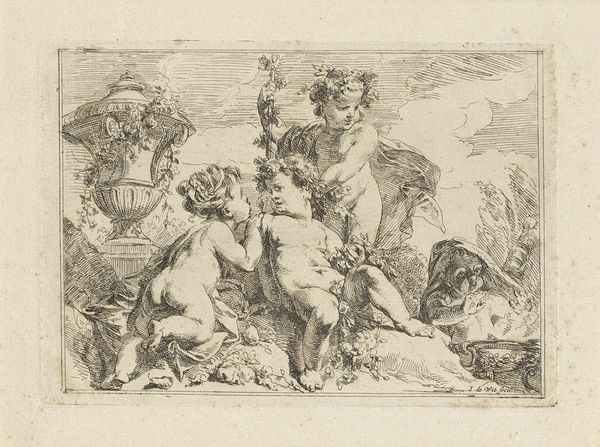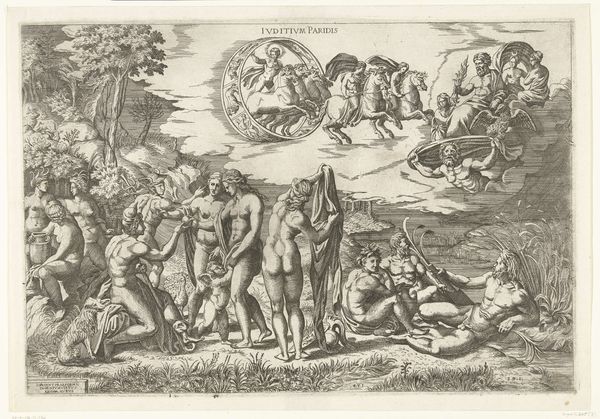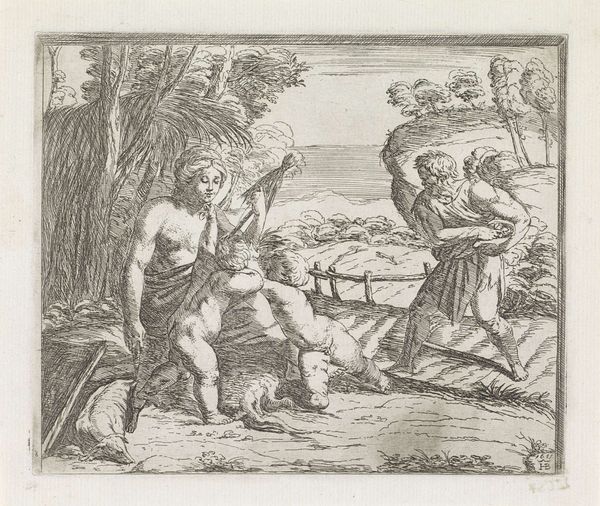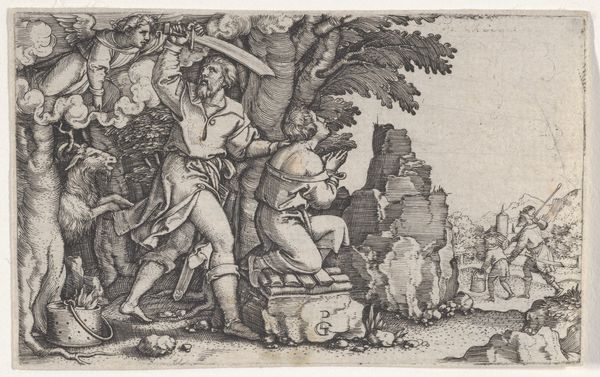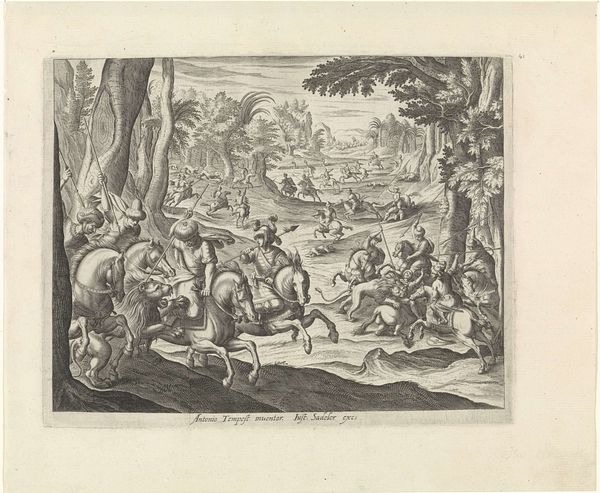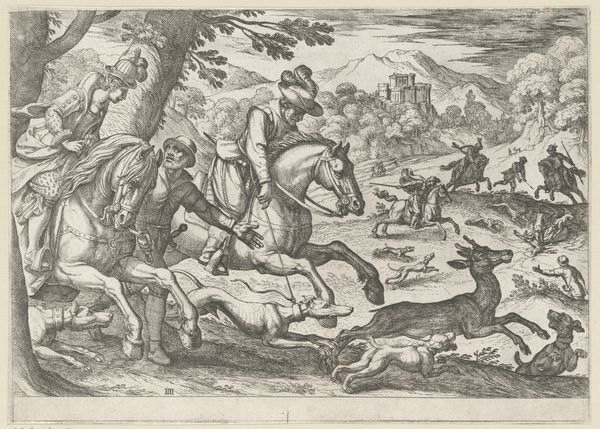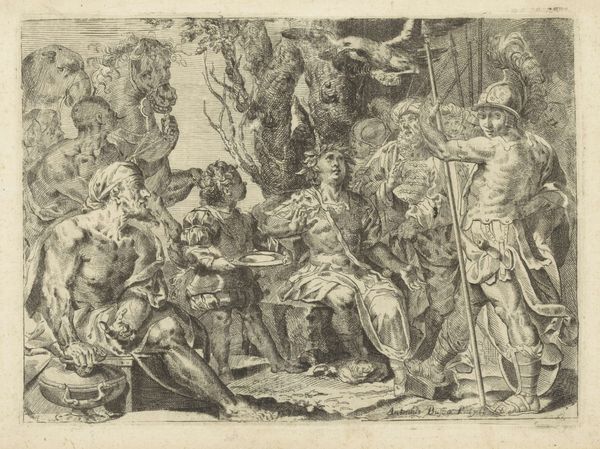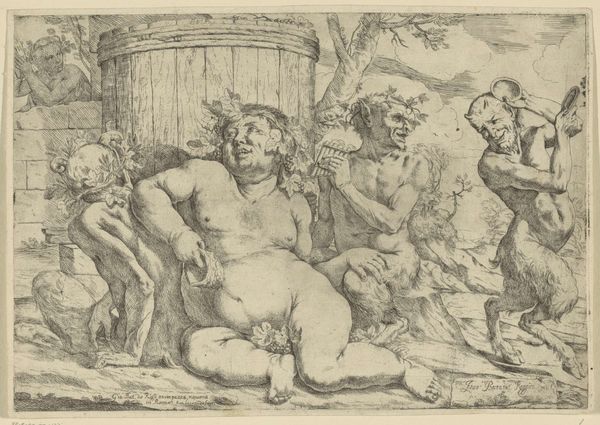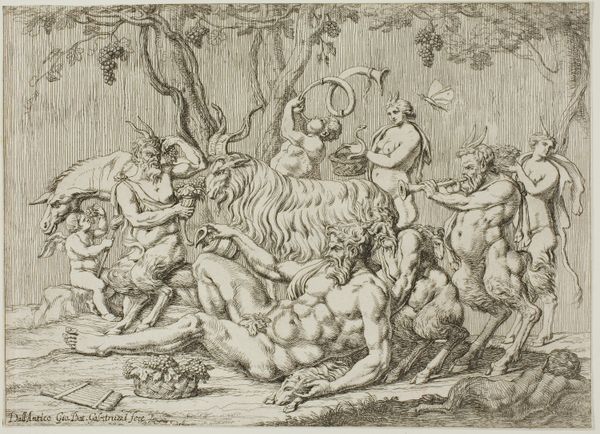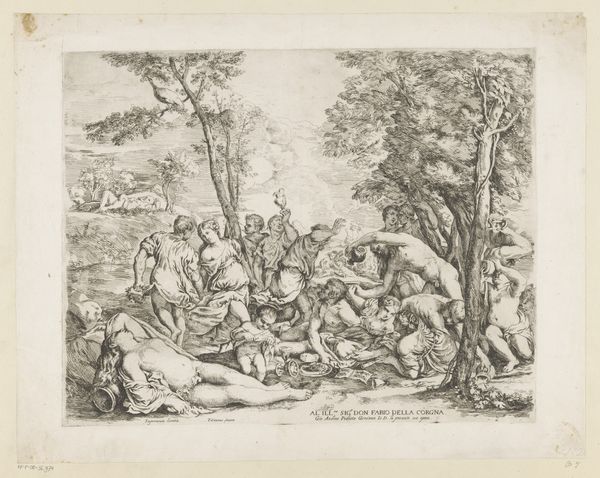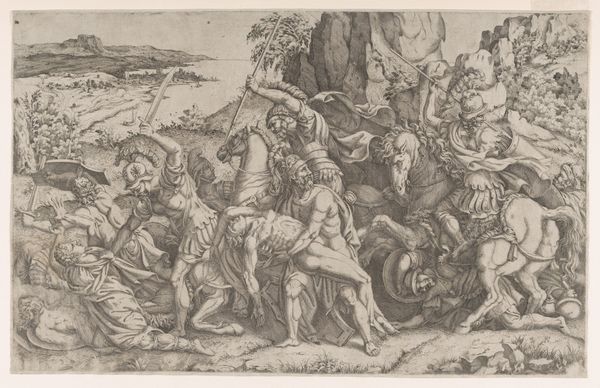
drawing, ink, engraving
#
drawing
#
ink drawing
#
allegory
#
baroque
#
pen drawing
#
pen illustration
#
pen sketch
#
ink
#
genre-painting
#
nude
#
engraving
Dimensions: height 76 mm, width 98 mm
Copyright: Rijks Museum: Open Domain
Curator: This is "Saters en nimfen onder een boom," or "Satyrs and nymphs under a tree," an ink drawing attributed to Jonas Umbach, made sometime between 1634 and 1690. It is currently held at the Rijksmuseum. Editor: My first impression is one of chaotic revelry, a snapshot of unrestrained mirth, teeming with figures in a relatively confined space. The sharp contrasts in light and shadow lend a slightly unsettling tone. Curator: Unsettling how? Think of it as representative of broader baroque tendencies—an interest in motion, sensuality, and complex, interwoven narratives, frequently set within pastoral or mythological contexts. How does that impact your understanding? Editor: That the erotic energy underscores something darker…a reminder of unchecked privilege. The bacchanal wasn't merely about pleasure; it signified an elite release from social constraints, at the expense of others, always. Here, there is little attention given to the viewer, and what feels like a great divide between the satyrs, the nymphs and even the putti figures high above who might be Cupid. Curator: You see this divide visualized through particular symbols? The poses? The drapery hung high, but dividing groups. Editor: Precisely. The dark ink work adds a further symbolic layer, suggesting corruption. The dark is obscuring parts and aspects of the composition as a whole. A warning about unchecked desires and societal imbalances made potent through allegory. How would you interpret its enduring power from an iconographic perspective? Curator: Beyond its formal execution and potential readings as an emblem of its era, I find the persistent reappearance of such symbols and motifs throughout history especially interesting. We consistently recycle figures like satyrs, nymphs, cupids in order to give form and name to desires both good and bad, light and dark. They show a human side to history, however unsettling that human side is. Editor: Perhaps it's less about a need for "form" and more about a longing for transgression that is permissible… or to at least fantasize and illustrate and circulate its consequences. But in either case, to be still pondering such images across centuries shows how truly consistent human behaviour can be. Curator: Well, the image itself definitely gives us much to continue pondering.
Comments
No comments
Be the first to comment and join the conversation on the ultimate creative platform.
